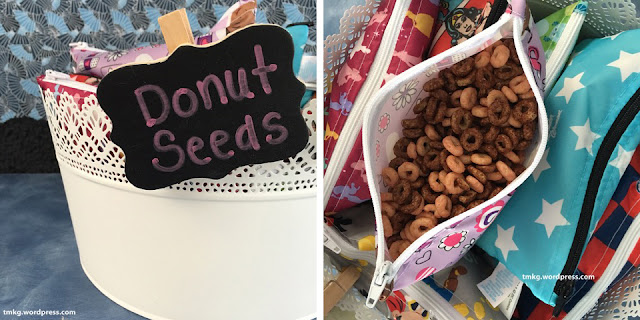Only four ingredients go into these easy turkey sticks! Nova loved exploring a new food and feeding herself this wholesome, simple dinner. They are great for Baby Led Weaning because your little one can grip the turkey for self feeding and the texture is easy to nibble on. If you want to try Baby Led Weaning, but find it a little nerve-wracking this would be a great recipe to try!
4 Ingredient Turkey Sticks
- 16 oz package ground turkey
- 1/4 c pumpkin
- 1/4 c baby oatmeal
- 1/8 tsp cumin
Mix ingredients together with hands and form into log shapes. Brown on all sides in an oiled cast iron pan. Bake at 350° for 20 minutes.
I used canned pumpkin puree from the baking aisle. If you can’t find pumpkin you can substitute baked and mashed acorn squash, or you can even try a jar of butternut squash baby food puree. It’s fun to experiment with different ideas! My idea for this recipe was inspired by meatballs. The pumpkin holds the ingredients together as eggs would, and the oatmeal gives the turkey a light texture. When mixing ingredients together, you will be able to feel if you need to add a sprinkle of oatmeal or an extra dollop of pumpkin.
I made a batch of Turkey Sticks and used a flash freezing technique to store for quick meals. This process, a.k.a. freezer cooking, takes a lot of stress out of our dinner routine. I love being able to cook once, and freeze several portions. Not only does freezer cooking save me time, but it also saves me from throwing away leftovers that got too old.
To flash freeze, line a baking sheet or cutting board with wax paper. Place the turkey sticks on the sheet, spaced out so they are not touching each other. Freeze several hours until frozen solid then store in a zipper freezer bag. To defrost, simply warm with your microwave or toaster oven.
To flash freeze, line a baking sheet or cutting board with wax paper. Place the turkey sticks on the sheet, spaced out so they are not touching each other. Freeze several hours until frozen solid then store in a zipper freezer bag. To defrost, simply warm with your microwave or toaster oven.
When I defrosted the Turkey Sticks for dinner a few days later, I served them with steamed asparagus and diced cherries.
Thank goodness I had my Bumkins Splat Mat ready to catch all of the mess! Josie (2.5 years old) is learning to keep her food on her plate, but the Splat Mat saves me a lot of sweeping and mopping after Nova’s meals. I lay it down under her chair before her meal then I shake the crumbs into the sink before tossing in the washing machine. It’s like a giant bib for the floor! Sometimes I even sit these sweet sisters next to each other and they both fit under the Splat Mat. They are too cute sharing their meals!











































